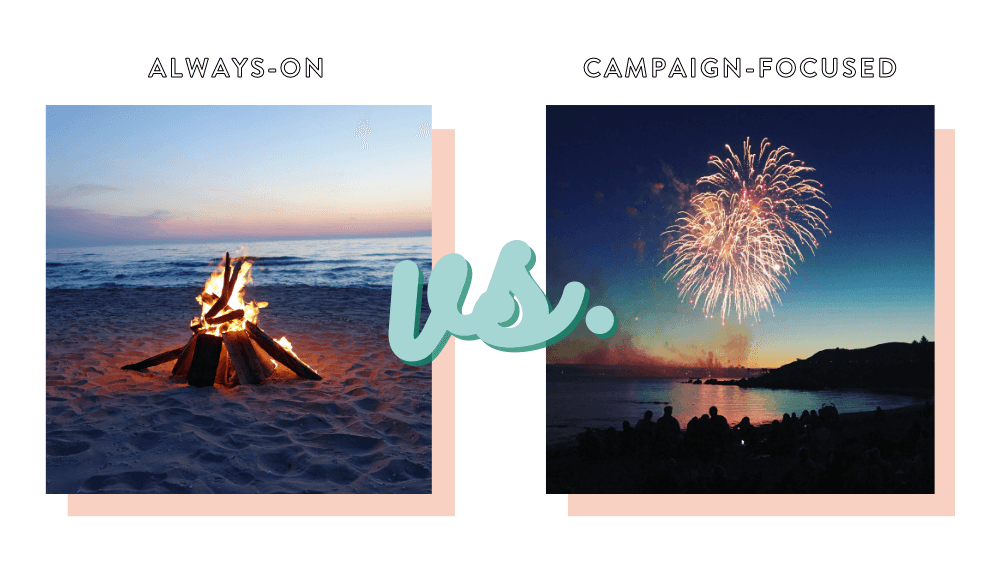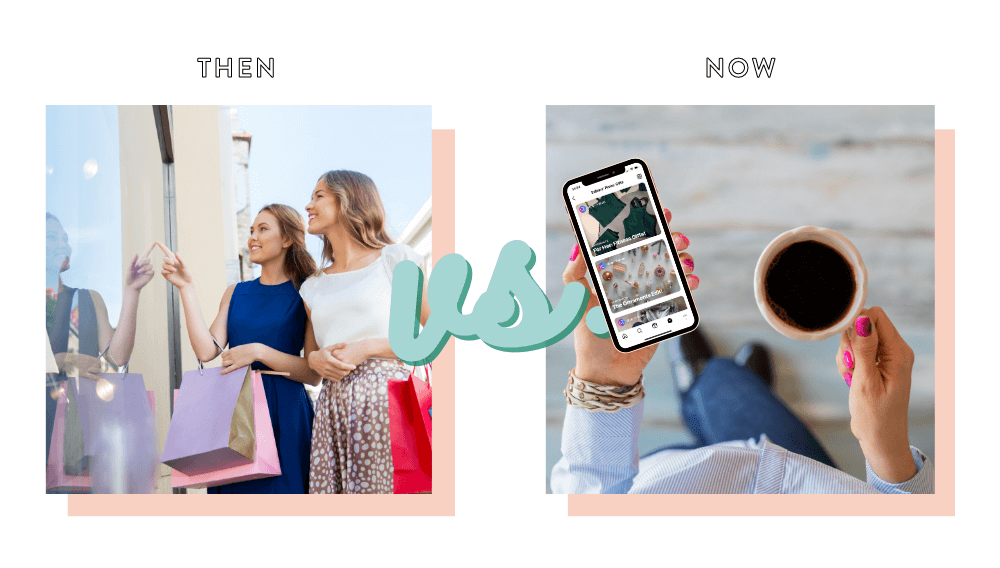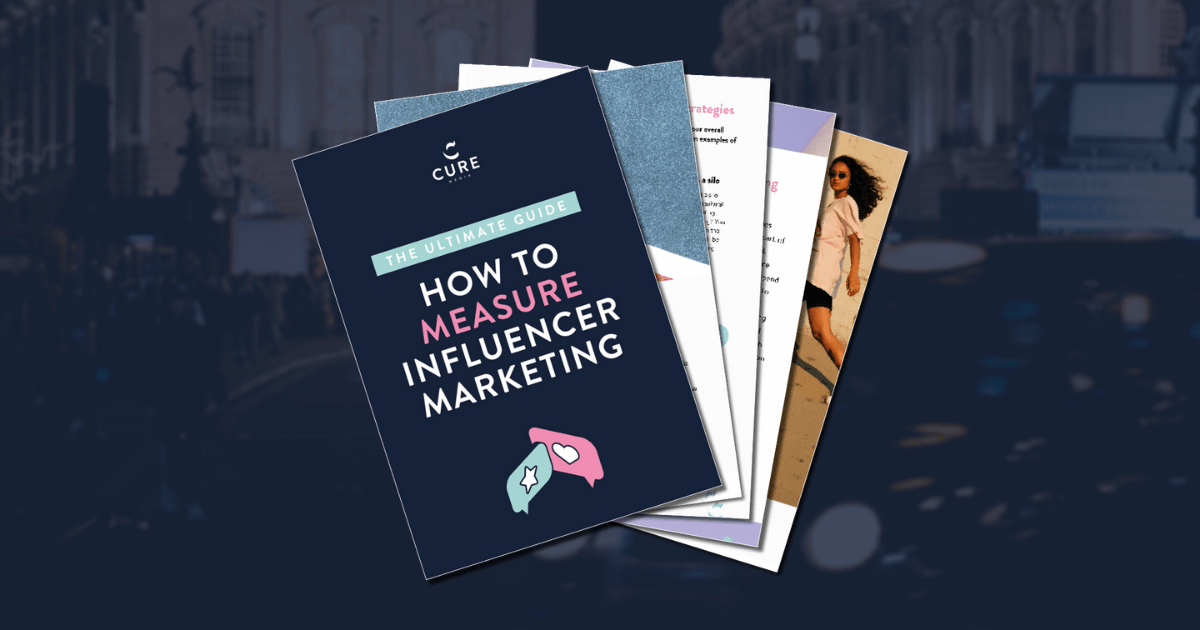In order to measure the effect of influencer marketing in a relevant way, it’s important that you know from the beginning what you want to achieve with the channel and what part it should play in relation to other channels. Is it to build brand awareness in a new market, to strengthen the brand with an existing target group, or perhaps to drive online sales? Of course, there can be several purposes, depending on how you build your strategy.
In this article, we clear things out and help you understand how influencer marketing fits into your mediamix. We also explain why you should never measure influencer marketing in a silo, or channel by channel and why you always need to have a holistic approach.
Do you prefer to listen instead of reading? Check out this podcast episode on the same topic!
To make it a little easier, we can use the classic model ‘See-Think-Do’ as a basis, which describes a potential customer’s intention in an imaginary buying journey. Although this of course presents a generalised image of the media landscape, it can be said that most channels have a clear place in this model; outdoor advertising (OOH) and TV advertising, for example, are most common at the beginning of the buying journey (or top-funnel), as the main purpose is to reach a wide mass of people and create awareness. Thus, these are known as reach media. Other channels, such as social media and influencer marketing, can be used to advantage throughout the whole buying journey – both to achieve the reach in the top funnel, but also to drive traffic and sales further along the buying journey (or further down the funnel). How influencer marketing fits into your customer’s buying journey, and the rest of your media mix, simply depends on how you choose to work with the channel, and what goals you have set.

Below we’ve listed the three different steps and how influencer marketing can fit in and work along the buying journey. Of course, this is a simplified and generalised picture – in reality, the phases overlap and it’s often an iterative process. Us humans are not always logical creatures when it comes to decision-making, whether it’s a purchase or something else in life.
Step 1: SEE
Goal: Create awareness among the target group and achieve high a high reach
The people in the See phase have no direct intention to buy, but here it’s important to attract their attention and create awareness of your product or brand. Through the right content, you can then drive the consumer on to the next phase.
Different strategies to achieve a high reach in the See phase
This is a large group of potential consumers, so the goal is to achieve high reach in a broad way across the target group. In this part of the buying journey, it’s generally important to create content that inspires and stands out in the crowd – considering how many commercial messages we’re exposed to every day (several thousand!), this is critical. Even if the consumer is not in a buying situation right now, it’s important to be visible and communicate in a way so that he or she has your brand at top of mind when the person in question is about to make a buying decision. This is best done by working with continuous presence over a longer period of time, through what’s known as an always-on approach. By working always-on with several influencers simultaneously over a longer period of time, you can build brand awareness and brand preference among your target group, and at the same time succeed in establishing credibility – something that’s rarely done overnight.
To achieve high reach in your target group, it’s important to collaborate with influencers who have the ‘right’ followers – that is, people who are a part of your target group. It could be a matter of using several smaller influencers (micro/mid-size), or fewer, larger influencers. You can also combine these two methods; when you work continuously with micro and mid-size profiles, you build up a presence over time and increase your chances of ending up top-of-mind with the target group. This becomes like an engine in your strategy. Then you can add some larger, carefully selected influencers – people that your particular brand wants to be associated with from a branding point of view.
To make it a little more specific, we usually illustrate the different strategies as being like a campfire vs. fireworks; an always-on approach is like a campfire that’s burning constantly, where your target audience gathers, and the flame never goes out. A campaign-based approach, where you often work with more promotion focus in the form of a smaller number of influencer hits per year, is more like fireworks – they’re more visible there and then, but the effect is often shorter.

Again, there is no rule that says a campfire and fireworks can’t take place simultaneously. For example, when you launch in a new market, it can be advantageous to use one or two more famous influencers that you want to be associated with from the start. To build credibility and presence in the long run, however, you need to work always-on, with influencers that hit the target group precisely. In other words, what’s important is understanding that the different strategies play different roles, and how to use them to complement each other the best way.
Step 2: THINK
Goal: Create involvement, deepen the relationship with the target group and help them move forward along the buying journey
In this part of the buying journey, the consumer has shown a certain interest in your product category. There’s a need, and therefore also questions and concerns. Maybe the person is going to invest in a new piece of furniture for their home or buy an item of clothing to wear to an upcoming graduation party. Unlike previously, this is not just about inspiring but also about responding to the questions or thoughts the target group may have. It’s also about creating a deeper involvement with the target group, which makes you different from other options or competing brands.
In this phase, it’s at least as important to work always-on, with continuous presence, in order to succeed in creating trust among the target group, and for you to be top-of-mind when it eventually becomes time to make a buying decision.
So, in addition to the same type of content as used in the See phase, examples of influencer marketing activities in the Think phase could be tutorials, Q&A sessions, or live videos where followers can interact and experience a different level of involvement. Below you can see two specific examples of involving influencer content in the Think phase:
Live-stream with selected favourites from the autumn collection
As the summer season was getting closer, the e-commerce company Ellos wanted to show off dresses in a new and more interactive way, where the consumer would experience the feeling of ‘touching and feeling’ the clothes. The purpose was to create deeper involvement among the target group and drive sales. The result was a live broadcast on Instagram where a chosen influencer would pick out and try on their ten favourite items, and where followers could join in and ask questions about the clothes – the feeling of the material, the size of the piece, or how the clothes could be mixed and matched in different outfits. In addition to the always-on strategy that Ellos runs on an ongoing basis, this became a way to create a more interactive dialogue with their target group and get the chance to hear what they thought of the garments and find out what they would like to see more of. Another effect was that several of the garments sold out immediately – in other words, you can also push the consumer on to the next phase from here through the right content.
Break down popular prejudices about contraception
The pharmaceutical company, Bayer, wanted to raise awareness about different types of contraceptives and, in connection with this, break down popular prejudices and myths associated with the subject. As part of a long-term always-on strategy, selected influencers asked their followers to submit questions and statements about contraception. These were then answered by an expert, who helped in exploring the common concerns with the help of the influencers, and ensured that the correct information was shared. By inviting their target group into a dialogue, Bayer not only had the chance to talk directly to their target group, but they also gained a deeper insight into which areas interested them, which was valuable information for their content strategy going forward. This is a great example of how you can use influencer marketing to deepen your relationship with your target audience and create meaningful content for a deeper involvement.
Step 3: DO
Goal: To drive conversion in the form of traffic to the site or sales, for example
Since, in the third phase, people are ready in principle to make a purchase right away, it’s important to be visible in the right place, at the right time, and to have a clear message that matches the target group’s wishes. According to H&M’s founder Erling Persson, H&M stores should be where ‘the money and the shopping bags are’ and it’s important to think exactly the same way in this case. The only difference is that the streets of shops from that time have been replaced, or supplemented, by digital shop windows (See) and shopping opportunities (Do) on social platforms.

The Do phase usually involves working with calls to action in the form of affiliate links and discount codes, to encourage a specific action. An affiliate link is a special link that tracks clicks and sales and generates commission for the influencer. These can be useful for purely sales purposes, but they should not be compared to influencer marketing; because you as a company are rarely involved in controlling the content, the branding value will be low and your brand risks disappearing among other similar brands. A discount code on the other hand is what it sounds like – a code that is used to give the consumer a discount on their purchase, and which enables you to evaluate the result, both at the promotion and influencer level.
In general, the strength of influencer marketing as a channel is in the See and Think phases, as there are not many other channels that can build such a strong presence and credibility among your target group over time. In the Do phase, i.e. where the purpose is to drive traffic towards purchases, there are other strong channels, such as Google Ads and paid social. Our recommendation is therefore to use the content that influencers have created in the See and Think phase, to drive traffic in the Do phase – in other words, by boosting influencer-generated content with the help of paid advertising on social media. However, this is a chapter in itself which we will not go into in depth in this article.
Now we hope you have a clearer picture of the part influencer marketing plays among the other channels in the mix, and how it can be used in the different phases of the buying journey. But remember; there is no foregone conclusion and reality is seldom as simple as it appears in theory. So, it’s important that you try things out on your own to find the right mix of channels for each part of the funnel.



